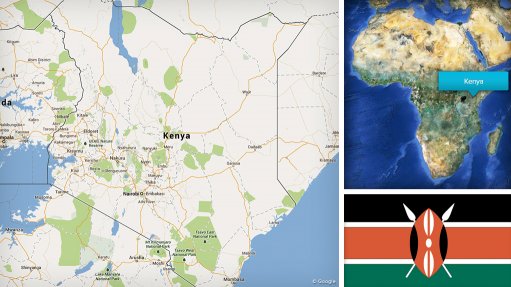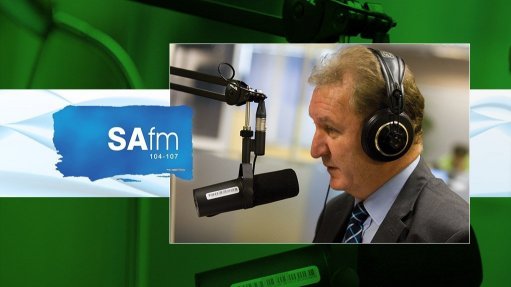Multi-dimensional tailings standard demands varied disciplines
This article has been supplied as a media statement and is not written by Creamer Media. It may be available only for a limited time on this website.
Vis Reddy, Chairman of SRK Consulting (SA) and Regional Coordinator (Africa) for SRK Global
John Stiff, Partner and Principal Engineering Geologist at SRK Consulting
With the passing of the first deadline for mining companies to bring their tailings storage facilities (TSFs) into compliance with new standards, a fundamental shift has taken place toward a more multi-dimensional approach.
In August 2023, the Global Industry Standard on Tailings Management (GISTM) required compliance from tailings storage facilities (TSFs) with the highest potential consequences in the event of a failure. A key element of the GISTM’s impact is that tailings management is no longer one-dimensional. Significantly, it systematically considers the environment in which the TSF is located – beyond the technical requirements from an engineering perspective. This clearly demands that a wider range of disciplines are brought to bear on analysing and mitigating the risks.
Closure and climate change
Nowhere in the standard is this clearer than in the closure requirements that it stipulates. The background to the renewed focus on closure is important, as some of the TSF failures that prompted the GISTM took place in facilities that were no longer operational. They were under care and maintenance, having entered the closure phase of their life cycle. Certainly, there has been more attention paid to mine closure generally in past decades, and TSFs were considered part of this process – but the GISTM has been specific and pointed in its approach.
Traditional tailings-related disciplines include civil engineering – in particular the geotechnical element – and hydraulic engineering, as well as engineering geology, geohydrology and geochemistry. To these have now been added the environmental and social disciplines, including speciality areas such as climate change adaptation and stakeholder engagement.
Climate change has precipitated shifts in rainfall patterns, making it more difficult to rely on historical rainfall statistics when planning for closure. More rainfall could lead to a TSF capturing greater volumes of water than its initial design capacity. Less rainfall could mean that vegetation cover does not survive, resulting in high levels of erosion and consequent instability. SRK has been expanding its environmental engineering capability over recent decades that feeds well into these requirements.
Dam breach and disaster management
The GISTM also highlights the social impacts related to TSF design and operation, and guides mining companies on how and what they need to communicate to adjacent communities. An important aspect of the new standard is the need for dam breach analysis, to assess scientifically where tailings could flow in the event of a breach. Once again, SRK’s environmental engineering team has developed specific capacity in this regard over the past five years.
Results of dam breach analysis are vital to inform the emergency response and disaster management plan required by the GISTM – a plan which looks to the involvement of various stakeholders. With SRK’s multi-disciplinary teams serving mining and non-mining markets, disaster management planning is already a focus of our work for municipalities and other sectors.
The journey to date in applying the GISTM requirements has involved many additional studies to understand inherent geotechnical risks. The failures leading to the GISTM were clearly unforeseen by industry stakeholders that considered these structures as stable and safe. It is worth remembering that, in some cases, monitoring showed no signs that failures could occur, so this pointed to elements of the mining sector’s understanding of either the TSFs or the monitoring required that were incomplete.
Record-keeping and monitoring
The sector has been working hard to close that gap, and a significant level of new investigation is developing our general understanding of TSF behaviour. At operational level, there have been improvements on administrative aspects such as the record-keeping of reports and studies to track the design intent of each tailings dam.
Such attention to detail allows for cycles of continual re-assessment, following any changes that take place after the original design report – which could affect the stability of the TSF. The facilities are generally designed well, but there are often deviations during the construction and operation – which could lead to future instability. Keeping better records of each site’s development is therefore critical, as it improves the likelihood of them being well maintained and operated in accordance with the designs.
Technology is improving the way that TSF performance can be monitored in real-time, and is playing an important role in continuously tracking vital signs within the structure. Operators no longer need to wait for monthly or quarterly inspections; monitoring can now be conducted in real-time, delivering critical information through a dashboard to inform the responsible engineers, operators and accountable executives.
Progress and skills
The sector will need to keep up the momentum of advancements being made; many companies are making good progress while others are still lagging. Members of the International Council on Mining and Metals (ICMM) – a body that has strongly supported the implementation of the GISTM – are the custodians of around 1,100 TSFs globally. However, it is estimated that this is probably less than half of the TSFs to be found around the world.
While more TSF owners need to be brought into the fold of GISTM compliance, there also needs to be a concerted effort to generate and nurture the range of specialised skills that this work demands. Implementing the new standard lends itself more readily to the larger mining companies that have more resources, and for consulting engineers with the requisite multi-disciplinary skills base. However, as the foundation of expertise is stretched, it needs bolstering to make it more readily available to all who need it.
Comments
Press Office
Announcements
What's On
Subscribe to improve your user experience...
Option 1 (equivalent of R125 a month):
Receive a weekly copy of Creamer Media's Engineering News & Mining Weekly magazine
(print copy for those in South Africa and e-magazine for those outside of South Africa)
Receive daily email newsletters
Access to full search results
Access archive of magazine back copies
Access to Projects in Progress
Access to ONE Research Report of your choice in PDF format
Option 2 (equivalent of R375 a month):
All benefits from Option 1
PLUS
Access to Creamer Media's Research Channel Africa for ALL Research Reports, in PDF format, on various industrial and mining sectors
including Electricity; Water; Energy Transition; Hydrogen; Roads, Rail and Ports; Coal; Gold; Platinum; Battery Metals; etc.
Already a subscriber?
Forgotten your password?
Receive weekly copy of Creamer Media's Engineering News & Mining Weekly magazine (print copy for those in South Africa and e-magazine for those outside of South Africa)
➕
Recieve daily email newsletters
➕
Access to full search results
➕
Access archive of magazine back copies
➕
Access to Projects in Progress
➕
Access to ONE Research Report of your choice in PDF format
RESEARCH CHANNEL AFRICA
R4500 (equivalent of R375 a month)
SUBSCRIBEAll benefits from Option 1
➕
Access to Creamer Media's Research Channel Africa for ALL Research Reports on various industrial and mining sectors, in PDF format, including on:
Electricity
➕
Water
➕
Energy Transition
➕
Hydrogen
➕
Roads, Rail and Ports
➕
Coal
➕
Gold
➕
Platinum
➕
Battery Metals
➕
etc.
Receive all benefits from Option 1 or Option 2 delivered to numerous people at your company
➕
Multiple User names and Passwords for simultaneous log-ins
➕
Intranet integration access to all in your organisation

























